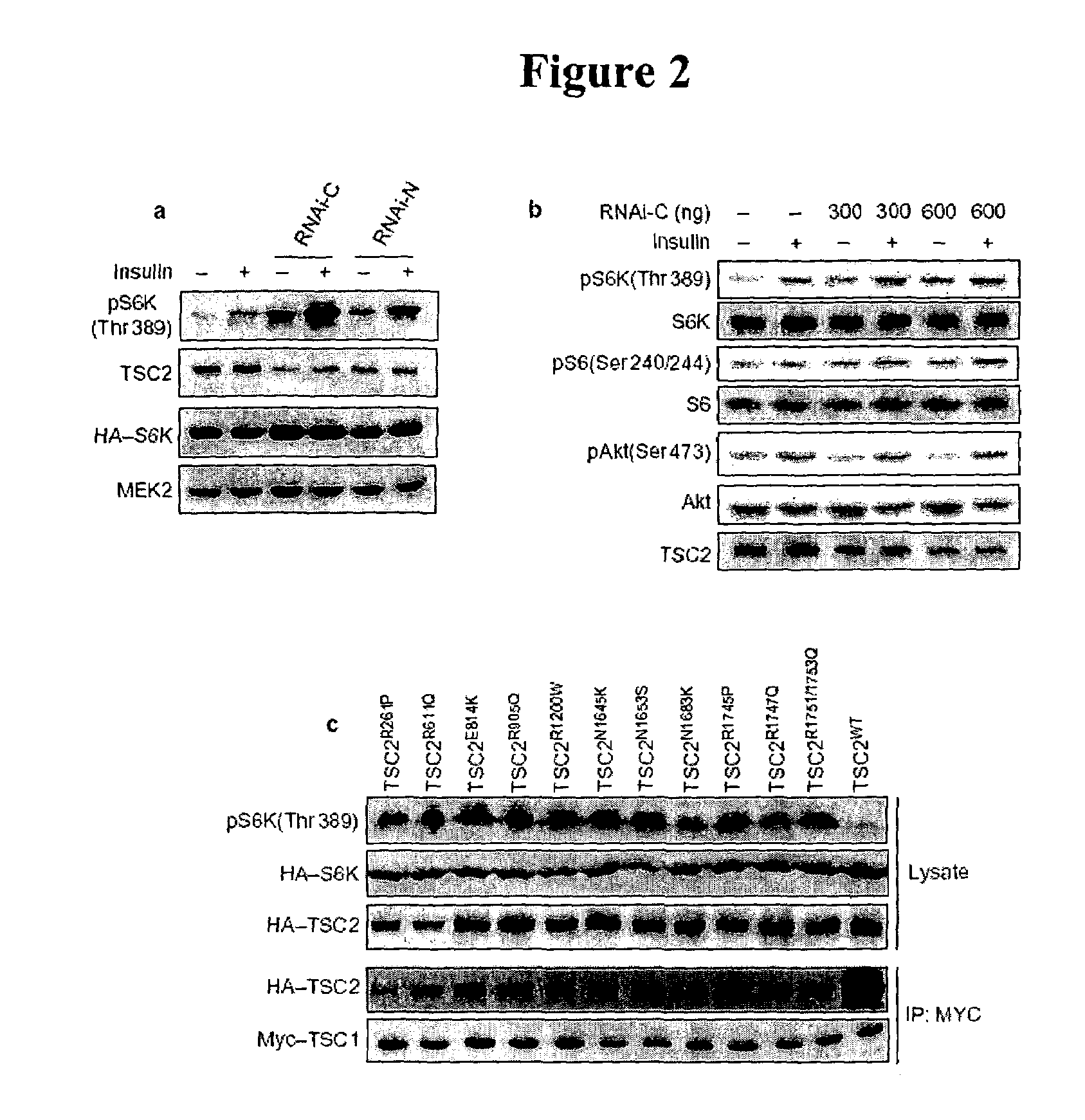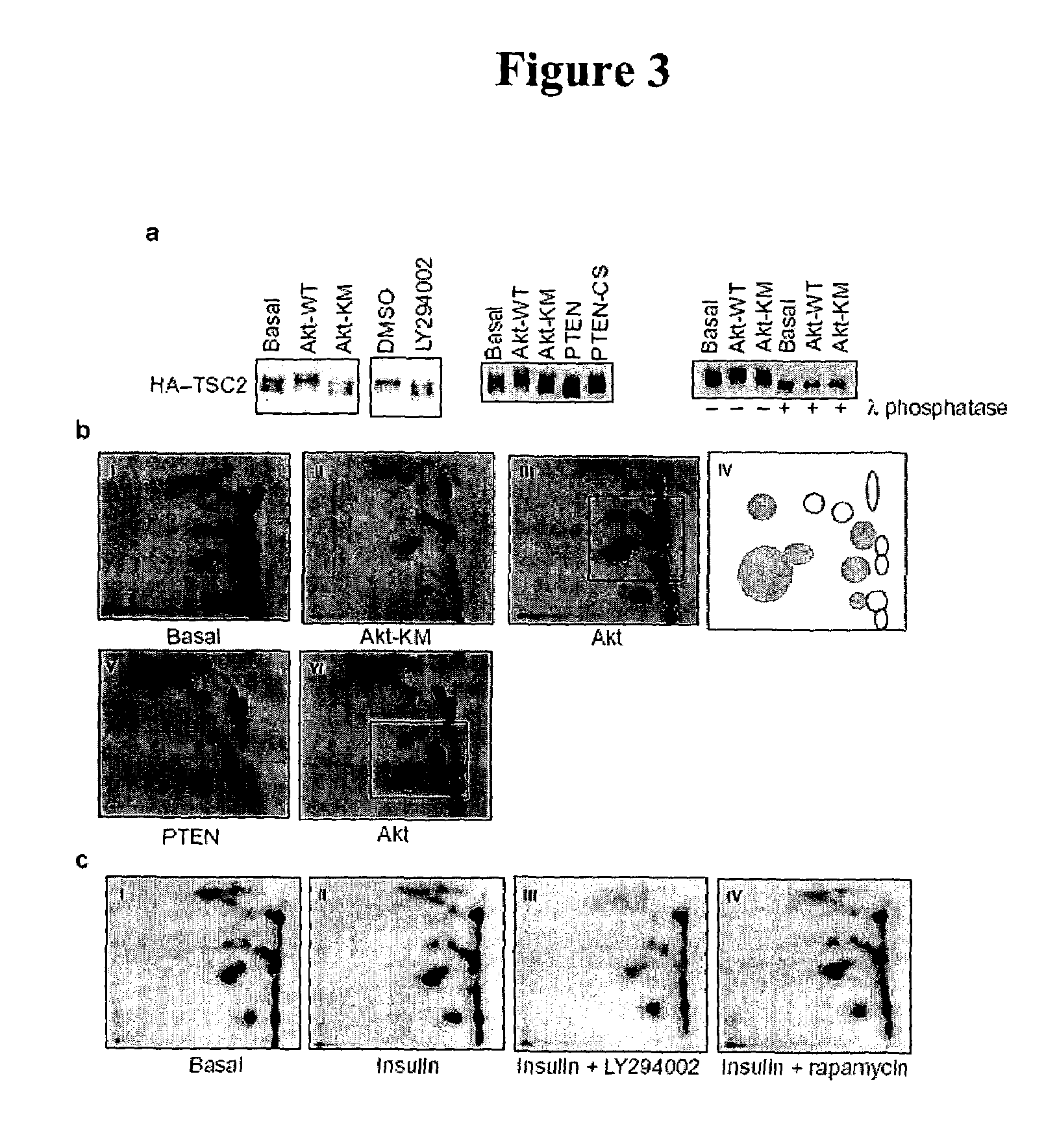Diagnosis and treatment of diseases arising from defects in the tuberous sclerosis pathway
a tuberous sclerosis and abnormality technology, applied in the direction of drug compositions, transferases, instruments, etc., can solve the problems of severe difficulties, death, and inability to fully recognize symptoms, and the tsc is often unrecognized and misdiagnosed for years
- Summary
- Abstract
- Description
- Claims
- Application Information
AI Technical Summary
Benefits of technology
Problems solved by technology
Method used
Image
Examples
Embodiment Construction
[0092]The present invention relates to compositions and methods for identifying abnormalities in TSC signaling pathways. In particular, the present invention relates to methods of diagnosing and treating disorders such as tuberous sclerosis, which are caused by mutations in the TSC genes. For example, in some embodiments, the present invention provides methods of diagnosing tuberous sclerosis by diagnosing increases in S6K kinase activity caused by mutations in the TSC1 or TSC2 genes. In other embodiments, the present invention provides methods of treating tuberous sclerosis by administering compounds that inhibit S6K kinase activity (e.g., rapamycin). The present invention further relates to methods and compositions for treating cancers mediated by TSC signaling disorders.
I. TSC1 and TSC2
[0093]TSC1 (also known as hamartin) encodes a protein with a relative molecular mass (Mr) of 130,000 (130K) that contains coiled-coil domains, but no obvious catalytic domains. TSC2 (also known as ...
PUM
| Property | Measurement | Unit |
|---|---|---|
| pH | aaaaa | aaaaa |
| pH | aaaaa | aaaaa |
| compositions | aaaaa | aaaaa |
Abstract
Description
Claims
Application Information
 Login to View More
Login to View More - R&D
- Intellectual Property
- Life Sciences
- Materials
- Tech Scout
- Unparalleled Data Quality
- Higher Quality Content
- 60% Fewer Hallucinations
Browse by: Latest US Patents, China's latest patents, Technical Efficacy Thesaurus, Application Domain, Technology Topic, Popular Technical Reports.
© 2025 PatSnap. All rights reserved.Legal|Privacy policy|Modern Slavery Act Transparency Statement|Sitemap|About US| Contact US: help@patsnap.com



